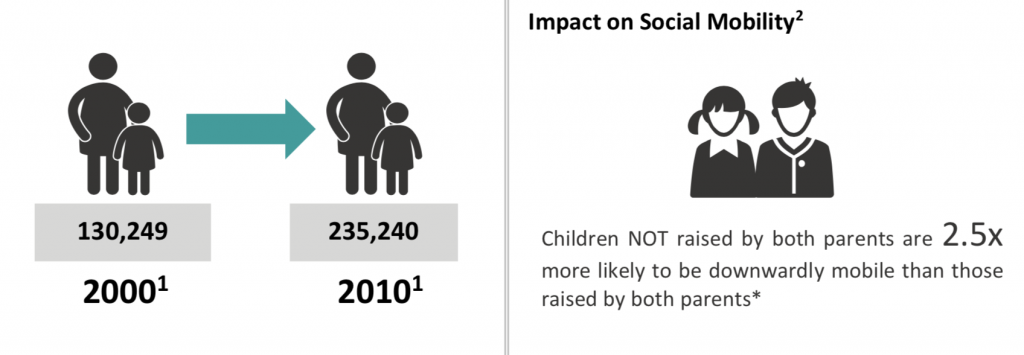Malaysia Population Research Hub

We seek to understand the trends in family formation that is occurring today, not only to enable ourselves to have a clear snapshot of the present family landscape, but also in order to lay the foundation of our thinking in how Malaysian families will likely evolve over the next decade and up to 2030.
The nuclear family is becoming the preferred living arrangement
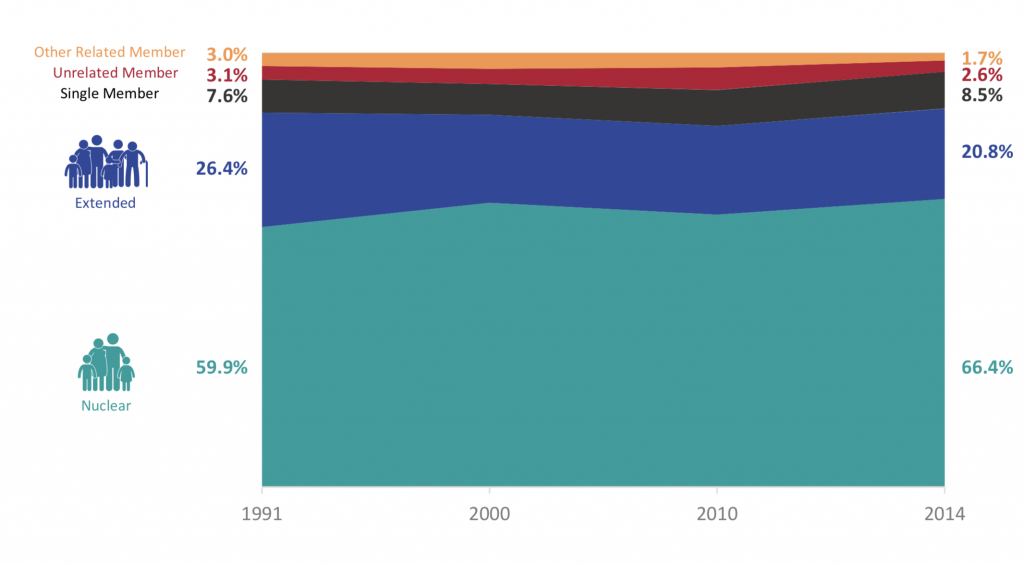
Over the past decades, family living arrangements have not changed drastically. By and large, Malaysian families are still living with their close ones in either a nuclear or extended family living arrangement. (In 1991, 86.3% of families lived in either a nuclear or extended family living arrangement; in 2014, 87.2% of families lived in either a nuclear or extended family living arrangement.) However, between the two, family living arrangements have shifted slightly over the past 2 decades.
Today, families increasingly prefer nuclear family living arrangements over extended ones, and this has changed the way families work, live, and seek support.
(In 1991, 59.9% and 26.4% of households were nuclear and extended families respectively; in 2014, 66.4% and 20.8% of households were nuclear and extended families respectively.)
Households are trending towards the small-size norm
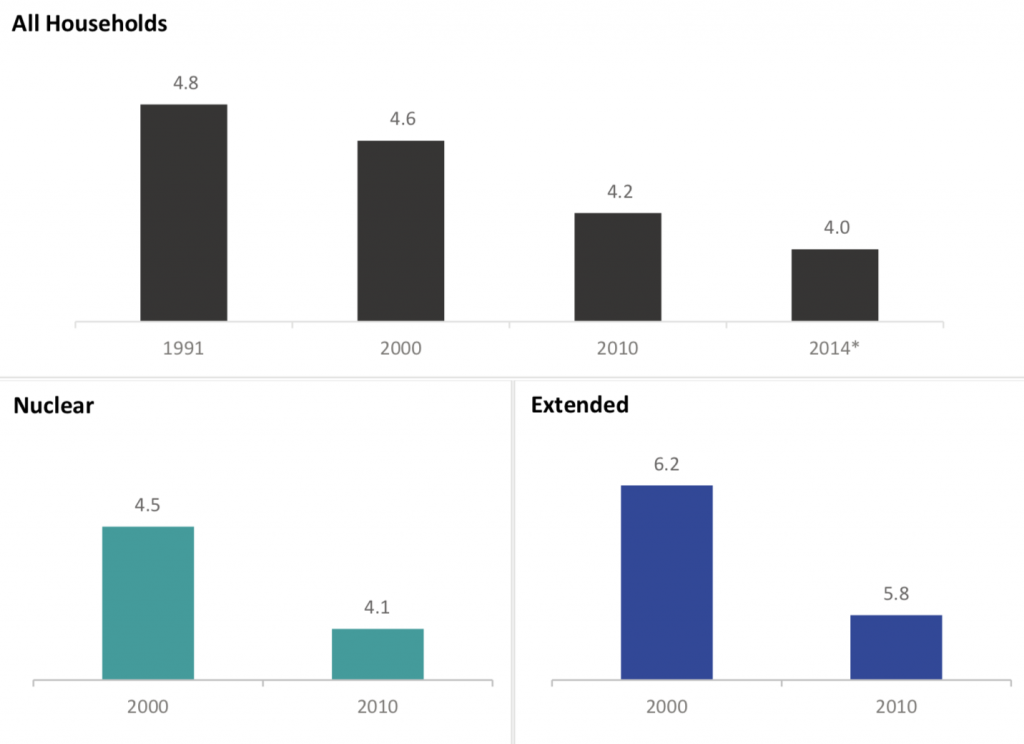
As more families move outside the extended family living arrangement and into the nuclear family living arrangement, household sizes began to decrease. Families are gradually shifting towards a small- sized norm, and the burden of caring for the household is gradually shifting onto the shoulders of fewer adults. (In 1991, the average household size was 4.8; in 2014, the average household size was 4.0). Moreover, the average household size of nuclear and extended family living arrangements is also on a decreasing trend. This implies that, in addition to the downsizing of households due to the shift from extended into nuclear, Malaysian families are also having fewer children. (Between 2000 and 2010, the average nuclear household size decreased from 4.5 to 4.1; similarly, the average extended household size decreased from 6.2 to 5.8.)
The number of families is growing, but family formation is slowing down
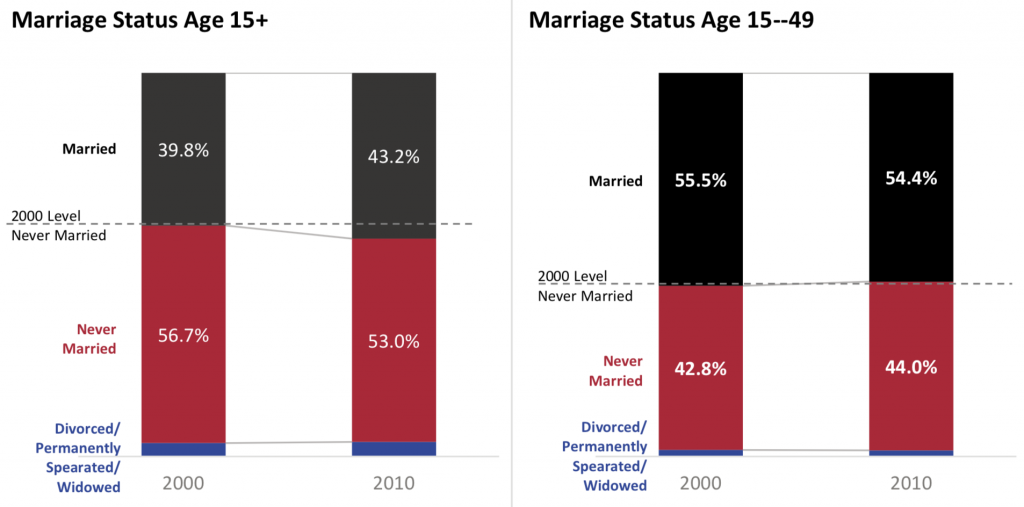
Like other Asian nations, marriage is still a predictor of family formation in Malaysia. The number of families in Malaysia is increasing, both in terms of its absolute and relative sizes, based on the distributive change of the number of married population in Malaysia. (In 2000, 39.8% of the population were married; in 2010, 43.2% of the population were married). Although the number of families have been increasing, the rate at which families are forming is slowing down.
The slowdown has given rise to a larger proportion of never marrieds in the age groups of 15-49, which subsequently has a direct impact on the family timing of childbirth and the lifetime number of children.
(The rate of family formation can be deduced from the distributive change in marriage status of the population aged 15-49, given that the desired mean age of marriage of the population is 31 years old1 and that the majority of marriages occur within this age range. In 2000, 42.8% of the population aged between 15-49 were never married; in 2010, 44.0% of the population aged between 15-49 were never married.)
The number of families with no children is increasing
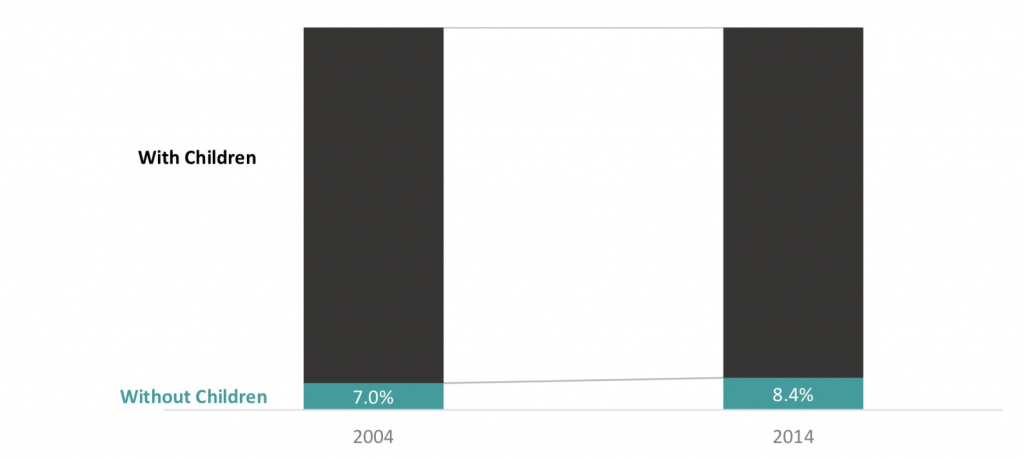
The majority of families in Malaysia have children. For families who do have children, each family would, on average, give birth to between 2 and 3 children based on MPFS-5 data, the average number of children given birth per married woman is 2.8 in 2014; based on DOSM, about 47% of live childbirths in 2015 were the mother second or third childbirth. However, there is also an increasingly larger number of families aged between 15-49 who remain childless, primarily due to delayed marriages. (In 2004, there were an estimated 7.0% of women aged between 15-49 who were childless; in 2014, an estimated 8.4% of women aged between 15-49 were childless.)
The prevalence of single mother families is rising
